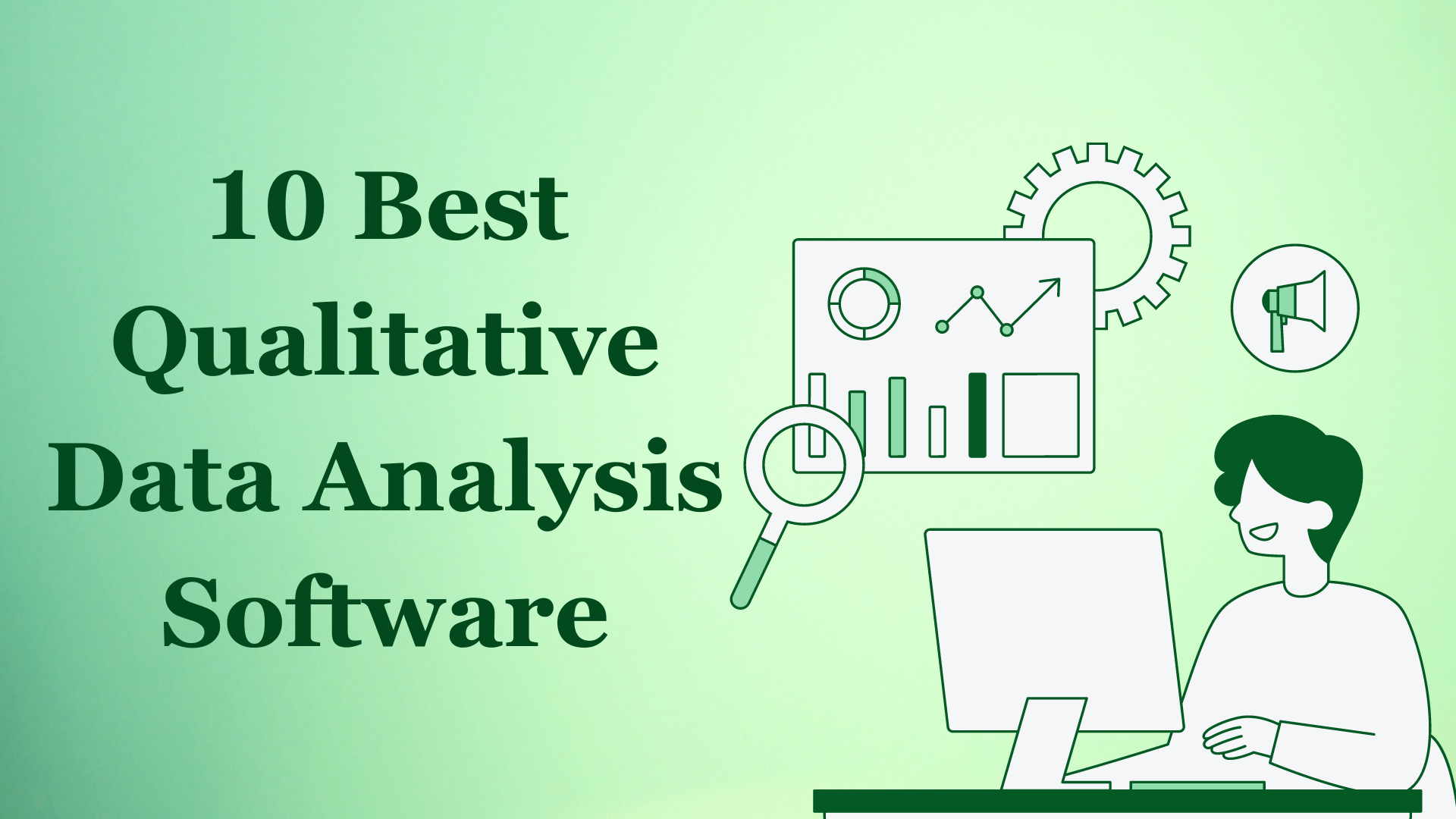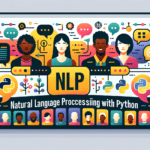Qualitative data analysis has become a cornerstone for researchers, analysts, and businesses seeking deeper insights from non-numerical data. Unlike quantitative data, which focuses on numbers and statistics, qualitative data encompasses a wide range of textual, visual, or audio content. Analyzing this type of data manually can be incredibly time-consuming and complex. Fortunately, qualitative data analysis software exists to streamline this process. This blog post will explore the best qualitative data analysis software available, helping you choose the right tool to unlock valuable insights from your data.
What is Qualitative Data Analysis Software?
Definition and Purpose:
Qualitative data analysis software is the organization, analysis, and interpretation of non-numerical data. These tools help researchers manage large volumes of textual, visual, or audio data, allowing for systematic coding, theme identification, and pattern recognition. The primary purpose of this software is to streamline the analysis process, improve accuracy, and enhance the reliability of results.
Key Features and Functionalities:
- Coding and Tagging: Tools for labeling segments of data with tags or codes to identify patterns and themes.
- Text Search and Retrieval: Advanced search functionalities to locate specific text or phrases within the data.
- Data Visualization: Options to create visual representations like word clouds, graphs, and charts to illustrate findings.
- Collaboration Tools: Features that allow multiple users to work on the same project simultaneously.
- Integration: Compatibility with other software and data formats to facilitate seamless data import and export.
- Reporting: Tools to generate detailed reports and summaries of the analysis.
Benefits of Using Qualitative Data Analysis Software
Enhanced Data Organization and Management: These tools provide a structured way to organize large datasets, making it easier to manage and retrieve information efficiently.
Improved Accuracy and Reliability of Results: Automated processes reduce the risk of human error, leading to more accurate and reliable analysis outcomes.
Time-Saving and Increased Efficiency: Automating repetitive tasks such as coding and categorizing data significantly reduces the time required for analysis.
Facilitates Collaboration Among Researchers: Many software options offer collaborative features, allowing teams to work together on the same project, regardless of location.
Advanced Analytical Capabilities: Qualitative data analysis software offers sophisticated analytical tools that can uncover deeper insights and more complex patterns than manual analysis.
Top Qualitative Data Analysis Software
Here’s a detailed look at some of the best qualitative data analysis software available today:
1. ATLAS.ti
Description: ATLAS.ti is a comprehensive qualitative data analysis software that emphasizes the big picture and research details. It provides Unicode support throughout the platform and allows direct data import from Twitter, Endnote, and Evernote. Its intuitive user interface, multiple document support, and robust network layout options make it a researcher favorite.
Key Features:
- Unicode support throughout the platform.
- Direct import of data from various sources.
- Intuitive user interface with multiple document support.
- Powerful network layout options for data visualization.
Price: Ranges from $51 to $93,500 depending on user type.
2. NVivo
Description: NVivo is a powerful qualitative data analysis software widely used by researchers and analysts. It supports qualitative and mixed methods research, allowing users to import and analyze various data types, including images, videos, emails, spreadsheets, and web content. With NVivo, researchers can conduct in-depth analysis using tools for relationship coding, charts, word clouds, and comparison diagrams.
Key Features:
- Supports qualitative and mixed methods research.
- Allows import and analysis of various data types.
- Offers tools for relationship coding, charts, and comparison diagrams.
- Enables coding, word frequency analysis, and coding comparison queries.
Price: Not Available
3. Quirkos
Description: Quirkos is designed to help users sort, manage, and understand qualitative text data efficiently. Its visual interface allows for quick and easy coding, while live visualizations help users see connections and findings come to life. Quirkos is known for its affordability and ease of learning, making it accessible to researchers across different economic divides.
Key Features:
- Visual interface for quick and easy coding.
- Live visualizations to see connections in data.
- Affordable pricing options for commercial, government, academic, and student users.
- Supports overlap and cluster views for data visualization.
Price: Ranges from £49 to £450 depending on user type.
4. Provalis Research Text Analytics Software
Description: Provalis Research offers a suite of text analytics software tailored for both qualitative and quantitative analysis. Its main tools include QDA Miner for text management and coding analysis, WordStat for text processing and keyword analysis, and SimStat for survey analysis. Provalis Research’s software is widely used for Surveys, brand image, and sentiment analysis.
Key Features:
- Tools for both qualitative and quantitative analysis.
- Supports survey analysis, brand image analysis, and sentiment analysis.
- Includes QDA Miner for text management and coding analysis.
- Offers WordStat for text processing and keyword analysis.
Price: Prices vary from 300$ to 3650$ per year on different packages to avail
5. MAXQDA
Description: MAXQDA is a professional software for researchers worldwide using qualitative, quantitative, and mixed methods data analysis. It allows users to analyze various data types, including interviews, reports, surveys, videos, etc. MAXQDA’s transcription tools and multimedia functionality make organizing, categorizing, and analyzing unstructured data easy.
Key Features:
- Analyzes various data types, including interviews, reports, and videos.
- Transcription tools and multimedia functionality for data organization.
- Supports mixed methods research.
- Offers features for exporting data and creating literature reviews.
Price: Ranges from $946.05 to $2,142 depending on the license type.
6. Dedoose
Description: Dedoose emphasizes efficiency in teamwork and data security, making it a popular choice among collaborative research projects. Its intuitive interface and advanced technology ensure ease of use and accessibility. Dedoose allows users to import data from various sources and analyze all qualitative and quantitative data types.
Key Features:
- Collaboration features for teamwork.
- Advanced technology for data security.
- Web-based and accessible from any device.
- Analysis of all types of data.
Price: $12.95 monthly for individual users, with pricing plans for small and large groups.
7. Raven’s Eye
Description: Raven’s Eye is an online natural language analysis tool based on Quantitative Phenomenology. It offers dynamic, powerful, and instantaneous automated analyses of written language, enabling users to understand people’s thoughts, values, and opinions accurately and quickly.
Key Features:
- Cloud-based data and analysis.
- Objective coding for accurate analysis.
- Reveals trends in natural language patterns.
- Provides insights for academics, businesses, government, and research industries.
Price: Ranges from $9.95 to $314.78 per month, depending on the package.
8. Qiqqa
Description: Qiqqa is a free research and reference manager for academics, researchers, and businesses. It allows users to efficiently search for, read, annotate, and share PDFs. Qiqqa’s automatic identification, tagging, and categorization features effectively help users organize their research library.
Key Features:
- PDF management and annotation tools.
- Automatic duplication detection and tagging.
- Optical Character Recognition (OCR) for PDFs.
- Google-like power for searching and organizing documents.
Price: Premium plans range from $6.67 to $41.67 per month.
9. webQDA
Description: webQDA is a web-based software for qualitative data analysis that supports collaborative and distributed research environments. It allows researchers to analyze qualitative data individually or collaboratively, synchronously or asynchronously, making it suitable for various research contexts.
Key Features:
- Simple and intuitive web-based interface.
- Total data security and permanent technical support.
- Compatible with all operating systems.
- Suitable for different types of research projects.
Price: 45 $ for three months
10. HyperRESEARCH
Description: HyperRESEARCH is a user-friendly qualitative analysis tool available on multiple platforms. Its simplicity and flexibility make it suitable for researchers of all levels. With improved media sources, case and code filters, and automatic project compression, HyperRESEARCH streamlines the qualitative analysis process.
Key Features:
- Importer tool for survey data from spreadsheets.
- Handles qualitative data in mixed methods studies.
- Runs on multiple platforms for accessibility.
- Improved page layout, printing, and text handling.
Price: Ranges from $199 to $1,139 depending on the package.
Criteria for Choosing the Best Qualitative Data Analysis Software
User-Friendliness and Interface: Choose software with an intuitive interface and easy-to-navigate features to minimize the learning curve.
Compatibility with Various Data Formats: Ensure the software supports the data formats you frequently use, such as text, audio, video, and social media content.
Analytical Features and Capabilities: Look for advanced analytical tools that match your research needs, including coding, text analysis, and data visualization.
Customization and Flexibility: Opt for software that allows customization to fit your specific project requirements and workflow.
Integration with Other Tools and Software: Check for compatibility with other tools you use, such as statistical software, survey tools, and data management systems.
Cost and Licensing Options: Consider your budget and evaluate the software’s cost against its features and benefits. Look for flexible licensing options, especially for team use.
Customer Support and Community Resources: Prioritize software with robust customer support and active user communities to help troubleshoot issues and share best practices.
Tips for Getting Started with Qualitative Data Analysis Software
How to Choose the Right Software for Your Needs: Evaluate your research requirements, budget, and technical expertise to select the most suitable software.
Best Practices for Data Import and Organization: Ensure data is clean and well-organized before importing. Use clear coding schemes and consistent naming conventions.
Maximizing the Use of Analytical Features: Familiarize yourself with the software’s advanced features and regularly utilize them to enhance your analysis.
Training and Resources for New Users: Take advantage of available training sessions, tutorials, and user guides to get up to speed quickly.
Future Trends in Qualitative Data Analysis Software
AI and Machine Learning Integration: Future software developments will increasingly incorporate AI and machine learning to automate coding and identify patterns more efficiently.
Enhanced Collaboration Features: Expect more robust collaborative tools, enabling real-time teamwork and streamlined communication.
Increased Focus on Data Security and Privacy: As data privacy concerns grow, software will offer enhanced security features to protect sensitive information.
Cloud-Based Solutions and Their Advantages: Cloud-based software will become more prevalent, offering greater accessibility, automatic updates, and scalable resources.
Conclusion
These qualitative data analysis software solutions offer a wide range of features to meet the needs of researchers across various industries and disciplines. The right software can significantly enhance the efficiency and effectiveness of your analysis. NVivo, ATLAS.ti, MAXQDA, Dedoose, and QDA Miner are among the best tools available, each with unique strengths and features. By carefully considering your specific needs and resources, you can select the software that will best help you unlock the potential of your qualitative data




